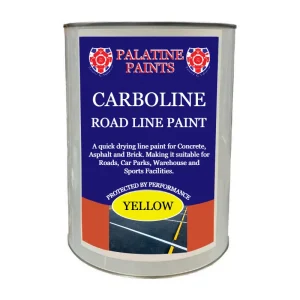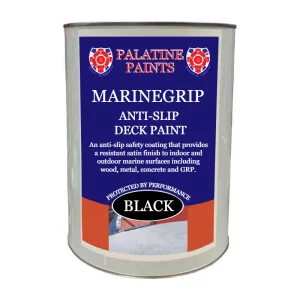All Blogs, Priming and Protecting
How to Prep Wood, Walls, and Metal for Painting
Preparing surfaces properly before painting is crucial for achieving a professional-looking finish that lasts. Whether working with wood, walls, or metal, each material requires specific techniques to ensure paint adheres well and looks its best. Understanding the nuances of surface preparation can make the difference between a stunning result and a disappointing outcome.
This guide explores the essential steps to prep various surfaces for painting. It covers key techniques for preparing wood, including sanding and priming, as well as methods to ready walls by removing old wallpaper and filling holes. The article also delves into how to prepare metal surfaces, addressing issues like rust removal and using the right primer.
By following these guidelines, DIY enthusiasts and professionals alike can set themselves up for painting success across different materials.
Understanding Different Surface Types
Characteristics of Wood Surfaces
Wood surfaces have unique properties that influence painting preparation. They are porous and can leach natural resins and oils, especially from knots. This characteristic requires special attention when prepping for paint application.
New wood often needs a water-based wood knot primer to lock in these substances and create a suitable base for paint. Wood’s porosity also means that paint tends to seep into it, which can affect the final finish. To address this, wood primers act as sealants, ensuring the paint stays on top and creating a uniform surface.
Common Wall Materials
Walls come in various materials, each with distinct properties affecting paint adhesion. Drywall is a common wall material that may require patching of holes or sanding of rough textures before painting. Some walls may have existing wallpaper that needs removal. Others might have previously painted surfaces that require assessment to determine if they are water-based or oil-based coatings.
This distinction is crucial as it influences the type of primer and paint to use for the new coat. Walls with glossy or oily surfaces might need thorough sanding or a specialist water-based primer to prepare them for fresh paint.
Types of Metal Surfaces
Metal surfaces present unique challenges for painting. They can be vulnerable to moisture, leading to corrosion if not properly protected. Different types of metal surfaces include iron, aluminium, and galvanised steel. Galvanised steel has a zinc layer that prevents rust but may reject paint, necessitating a primer for better adhesion.
Some metal surfaces may already have rust, requiring specific preparation techniques and rust-inhibiting primers. The choice of paint for metal surfaces depends on factors such as whether the metal can rust and its exposure to elements like heat or moisture.
Key Steps in Wood Preparation
Cleaning and Degreasing Wood
The first step in preparing wood for painting is thorough cleaning and degreasing. This process removes dirt, oils, and contaminants that can interfere with paint adhesion. To clean wood effectively, one can use a mixture of warm water and mild soap or a specialised wood cleaner. For more stubborn grime, a solution of trisodium phosphate (TSP) and water can be employed. It’s crucial to rinse the wood thoroughly after cleaning and allow it to dry completely before proceeding to the next step.
Sanding and Smoothing Techniques
Sanding is a critical step in wood preparation, as it creates a smooth surface for paint application and helps the paint adhere better. The process typically begins with coarser grit sandpaper (around 100-150 grit) to remove any existing finish or rough spots.
Gradually, one should progress to finer grits (220-320 grit) for a smoother finish. It’s essential to sand in the direction of the wood grain to avoid creating cross-grain scratches. For intricate areas or detailed work, hand sanding might be more appropriate than using power tools.
Dealing with Wood Imperfections
Wood often has imperfections such as knots, cracks, or holes that need to be addressed before painting. These can be filled using wood filler or putty, which should be applied with a putty knife and allowed to dry completely.
Once dry, the filled areas should be sanded smooth to blend with the surrounding wood. For deeper imperfections, multiple applications of filler might be necessary. Knots in the wood may require special treatment with a knot sealer to prevent bleed-through in the final paint job.
Wall Preparation Essentials
Cleaning and Assessing Wall Condition
Before painting, it is crucial to clean and assess the condition of the walls. This process involves removing dust, dirt, and grease that can interfere with paint adhesion. One can use a mixture of warm water and mild soap to wipe down the surfaces. For more stubborn grime, a solution of trisodium phosphate (TSP) and water can be effective.
After cleaning, it is essential to rinse the walls thoroughly with clean water and allow them to dry completely.
During the assessment, one should look for signs of damage such as cracks, holes, or peeling paint. These issues need to be addressed before painting to ensure a smooth and long-lasting finish.
Repairing and Filling Wall Damages
Once the walls are clean and dry, the next step is to repair any damages. Small cracks and holes can be filled using spackling compound or filler. For larger holes, a wall repair patch might be necessary. After applying the filler, it is important to let it dry completely before sanding the area smooth. This process may need to be repeated for deeper damages to achieve a level surface.
Priming Walls for Painting
Priming is a crucial step in wall preparation, especially for surfaces that are porous or have stains. Primers help to create a uniform surface for the paint to adhere to, ensuring a more even and durable finish. They also help to cover imperfections and prevent stains from bleeding through the new paint. For best results, one should choose a primer that is suitable for the type of paint and surface being used.
Metal Surface Preparation Guide
Preparing metal surfaces for painting is crucial to ensure proper adhesion and longevity of the paint. The process involves several key steps, each essential for achieving a professional finish.
Removing Rust and Old Paint
The first step in metal preparation is to remove any existing rust or old paint. This can be done using a wire brush or sandpaper to scrub away loose rust and flaking paint. For more stubborn areas, a wire brush attachment on a drill can be effective. If rust has penetrated deeply, soaking the object in a rust remover solution may be necessary. After scrubbing, wipe the surface with a damp cloth to remove any remaining debris.
Sanding and Smoothing Metal Surfaces
Once rust and old paint are removed, the next step is to sand the metal surface. This creates a smooth base for the new paint to adhere to. For most metal surfaces, start with a coarse-grit sandpaper (around 80-grit) and gradually progress to finer grits (220-320 grit) for a smoother finish. Sanding also helps to remove any remaining rust or paint residue. After sanding, clean the surface thoroughly to remove any dust or particles.
Applying Appropriate Primers
Priming is a crucial step in metal preparation. It helps to prevent rust from bleeding through the new paint and improves paint adhesion. Choose a primer specifically formulated for metal surfaces. For heavily rusted areas, a zinc chromate primer can be effective. Apply the primer evenly using a brush or spray, following the manufacturer’s instructions. Allow the primer to dry completely before applying the final paint coat.
Conclusion
Proper surface preparation is key to achieving a top-notch paint job, regardless of the material you’re working with. Whether you’re dealing with wood, walls, or metal, each surface has its own quirks that need attention to ensure the paint sticks well and looks great. By following the steps outlined in this guide, you’re setting yourself up for success and avoiding common painting pitfalls.
Remember, taking the time to prep your surfaces properly might seem like a hassle, but it’s worth it in the long run. A well-prepared surface leads to a paint job that not only looks better but also lasts longer.
So roll up your sleeves, grab your sandpaper and primer, and get ready to transform your surfaces into the perfect canvas for your next painting project.
Email: [email protected]
Call Us: 01942 884 122
Contact form: https://www.palatinepaints.co.uk/contact-us
Live Chat Service: Press the small blue icon at the bottom left of your screen.
FAQs
How should wood walls be prepared before painting?
To ensure a good finish when painting over wood panelling, follow these steps: Firstly, clean the surface thoroughly. Next, fill any holes or cracks. Sand the wood to create a smooth surface, then apply a primer. Once the primer is dry, you can paint the panelling and finish by painting the trim.
Is it possible to use the same paint on both metal and wood?
Yes, you can use the same paint for both materials. However, it’s important to note that paints formulated for metal might not perform as well on wood, as they tend to absorb into the wood grain excessively.
What is the simplest method to prepare wood for painting?
The most straightforward method to prepare wood for painting involves sanding. Start with coarse-grit sandpaper and gradually move to finer grit to achieve a smooth surface. Always clean off the sanding dust before proceeding to prime and paint.
How do you prepare metal surfaces before painting?
Before painting metal, it’s essential to clean the surface with mineral spirits to remove any grease. Following this, apply a rust-inhibitive primer to ensure a durable paint job.

